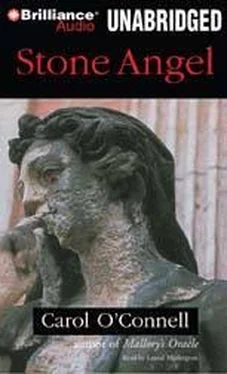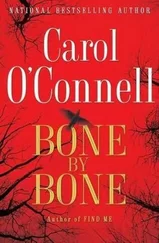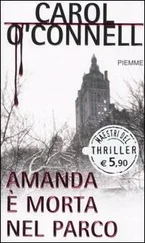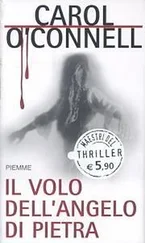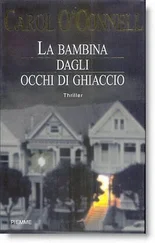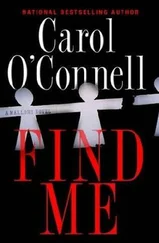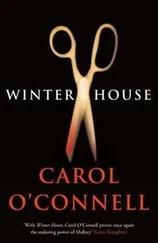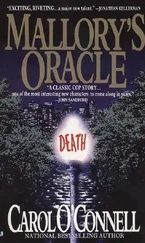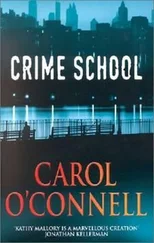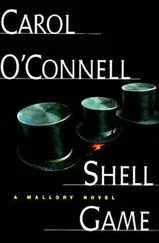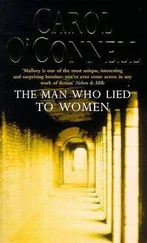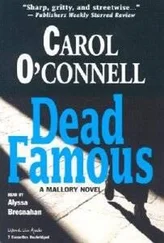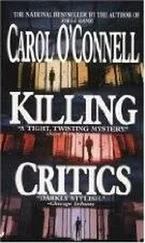The sculptor used both hands, upturned and open, alternately moving them up and down, weighing one thing against another to say, “Maybe.” He went on to say he might speak with Mallory, perhaps tomorrow – but only if it could be done without the sheriff asking questions, and that was unlikely. He did not enjoy the idea of lying to a man he had known for so many years, and Charles should not count on his help. Then his hands dropped back to his sides and hung there with nothing more to say.
Charles’s hands rose, as though to speak, but instead, they splayed wide in helpless frustration. He lowered his eyes and nodded. “I understand.” Of course he did. This man had no reason to trust him, to help him or lie for him.
Henry Roth shrugged to say that he could offer nothing more solid. And then his hands explained that he had work to do, and he must get on with it.
Charles followed the sculptor to the door and watched him unfold a metal ramp, extending it over the stone stairs to the back end of the truck. Now Roth unhinged two metal legs to level the ramp. He moved a rolling pallet in place near the open truck gate, and began to work the large canvas-covered shape from the flat bed, patiently rocking the massive stone and pulling it toward him.
Charles guessed, by metallic sounds, the pads beneath the stone must ride on ball bearings. Still, it was a tremendous weight, and this would be slow work for a man not much over five feet tall. Now he grasped the sculptor’s problem of weight, balance and leverage. In a moment, he had doffed his suitcoat and rolled up his sleeves. “Allow me, please.”
Henry Roth stood aside, and Charles pulled on the block until half of it jutted out from the bed of the truck. He eased it into an incline, and the bottom edge of the stone was sliding down toward the rolling pallet. As it touched the edge of the pallet, quickly, with one foot, he moved the rolling platform underneath it. Braced against the truck bed, the block was leveraged into an upright position. Next, he put his shoulder to the stone and pushed it along the ramp until it was housed inside the sculptor’s studio.
The man smiled his thanks, then signed, “It takes me an hour to unload a block that size.”
Roth locked the doors, and the two men walked away from the chapel and back toward the house. Now the sculptor made a firm date to meet at the town square in the morning, for he had thought of a way to avoid the sheriff and his questions.
Charles was still smiling as his Mercedes pulled out of the driveway. He traveled back along the dirt road, circling around the cemetery. Near the bridge was a signpost topped by a board in the shape of an arrow and weathered to blank, gray wood. All that remained of its lettering was an ironic y at the edge of the board. The mystery arrow pointed down a side road, a dark and narrow tunnel through dense woods of low-hanging branches. A notice posted on a near tree warned him not to enter the swamp by Finger Bayou, a narrow waterway running alongside the nameless road.
The sign for Upland Bayou was freshly painted and fixed to the metal girders of the bridge. This wider body of slow moving water was black in the evening hour and edged with a lace of pale green algae. Along the banks, the tree limbs were draped with gray beards of Spanish moss. On the far shore, wooden houses perched on feet of brick, and small flat-bottom boats were moored to gray wharves standing over the water on stilts.
At the other end of the bayou bridge, he was offered a choice of paved roads. To his right was the turnoff for the main highway and green fields of sugarcane extending out to the horizon line. He turned hard left toward the town. On both sides of Dayborn Avenue, the houses sat on conventional foundations, children played in the front yards, and windows lighted, one by one, as people returned home from work. Except for the warm weather and the occasional banana tree, he might be anywhere in America at the close of an autumn day.
When he rolled into the town square, his vista widened and perception altered radically. He was back in time. It was everything the brochure from the Dayborn Bed and Breakfast had promised – a collage of architectural history. The formal Georgian structure at the far end of the square must be the municipal building. Its walls were painted Federal green, and the white rooftop cupola mimicked a capitol dome.
The square was flanked by Italianate row houses of brick and mortar in hues of purple, pink, blue and yellow. Graceful galleries of ornate iron lace supported flowerpots in a smaller riot of colors above the ground-level storefronts.
He pulled his car to the curb in front of the hotel. There were private homes of Gothic Revival on either side, but this massive Colonial before him was the oldest building of all. The slanted roof of the bed and breakfast sported five gables and a chimney at either end, and its dark shingles sloped down to the support posts of the front porch.
He carried his suitcases up the stairs and met his hostess, Betty Hale, a white-haired woman of generous size and a more than generous smile. After the formality of checking in and depositing the bags in his room, she led him back out to the front porch and gently pressured him to sit down alongside the other guests, whose chairs were lined up by the rail like spectators at a sporting event. They were all facing north and holding field glasses to their eyes.
Betty unstrapped her own binoculars and put them in his hand. “Mr. Butler, I’m so sorry you missed the evening bat races. But if you look real quick, you can still see some of the losers.”
He followed the point of her finger to the triangular peak of Augusta Trebec’s house above the distant trees. He focussed the twin lenses on the tiny silhouettes of three bats flying upward from the roof. They were backlit by clouds which had lost all their color after sundown.
“Now look across the square, above the sheriff’s office,” said Betty, speaking to the larger audience and directing them to the south side of the municipal building. All heads turned in unison. “You see that light that just came on? See the bars on the window? That’s where they keep the woman who murdered Babe Laurie, though that’s not her window. Hers faces the alley between the sheriff’s office and the fire department.” She tapped Charles on the shoulder, speaking only to him. “You can see a real good likeness of her in the cemetery tomorrow morning – if you want to take the tour with the other guests. It’s included in the cost of your room.”
Charles was so startled, he only caught the odd word in Betty Hale’s ongoing monologue of breakfast and checkout times. This was even more inconceivable than the murder charge – Mallory had become a tourist attraction.
He slumped low in his chair, and stared at the window above the sheriff’s office.
So there you are . So close.
He remained on the porch long after the other guests had retired to their rooms, or gone off in search of evening meals with Betty’s advice on local cuisine. Long after nightfall, when the house lights had gone out, he was still sitting in the same chair, fixated on the light in the window across the square, until that too flickered out.
Good night, Mallory.
The hour was late, but Lilith Beaudare remained with her elder cousin until they were caught up on family stories to fill in all the years since the last visit.
The old woman’s face glowed in the flame of a match. She lit a cheroot and exhaled blue smoke into the night air.
“You know,” said Lilith, in the lecture mode, “you shouldn’t smoke. You want to be wheezing with emphysema in the golden years of your life?”
Читать дальше
